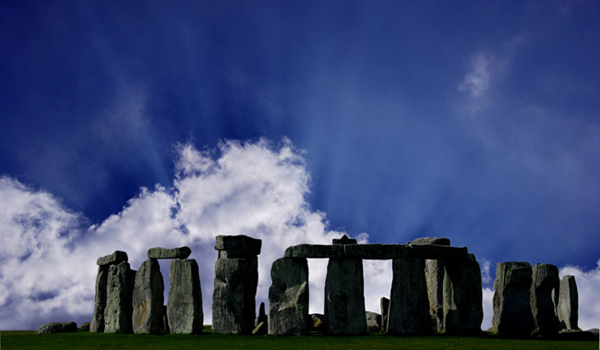What's a Henge?

Archeologists poking around the famous Stonehenge monument in Wiltshire, England think they have unearthed another henge.
But whether or not the new discovery found half a mile from Stonehenge is, in fact, a henge is still up for debate which raises the question: What's a henge, anyway?
Technically speaking, a henge, or henge monument as Stonehenge is called, is a circular embankment of earth with an internal ditch that surrounds a flat area of land.
At Stonehenge, the flat area of land is filled with large standing stones that are 6.6 feet (2 meters) tall and between 3.3 and 4.0 feet (1 to 1.5 m) wide. The giant stones weight about 4 tons (3,600 kg) each.
While Stonehenge's purpose is still somewhat mysterious, many theories exist.
Archeologists uncovered cremated human remains at the site dating as far back as 3,000 B.C., which suggests that Stonehenge may have been a cemetery.
But astronomers recently discovered that a puzzling, horseshoe-shaped row of vertical columns at Stonehenge's center may have been used to predict lunar eclipses.
Sign up for the Live Science daily newsletter now
Get the world’s most fascinating discoveries delivered straight to your inbox.
Archaeologists believe Stonehenge was built around 2,500 B.C. While it may be the most famous henge it's certainly not the only henge.
Woodhenge is a circle of timber that was also found in Wiltshire, England about 2 miles (3.2 kilometers) northeast of Stonehenge.
And Bluehenge, named for the scraps of bluestone found in the area, is a prehistoric henge about 1 mile (1.6 km) southeast of Stonehenge.
The new discovery, which may or may not prove be a henge, consists of a circle of pits, each about 3 feet (1 m) wide, which have been filled with earth for a long time. The pits were probably dug to secure a circle of wooden poles, archeologist and member of the team that made the discovery Vincent Gaffney told the Associated Press.
Other archeologists, however, said that the site needs to be excavated before they can assess the significance of the new discovery.
- How Do Sinkholes Form?
- How Were the Egyptian Pyramids Built?
- OurAmazingPlanet: Mysterious New Circle Found Near Stonehenge
Got a question? Email it to Life's Little Mysteries and we'll try to answer it. Due to the volume of questions, we unfortunately can't reply individually, but we will publish answers to the most intriguing questions, so check back soon.
Why is yawning contagious?
Scientific consensus shows race is a human invention, not biological reality









